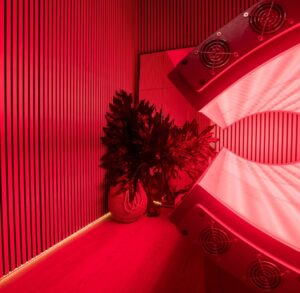In recent years, the use of red light therapy has gained significant attention for its purported health benefits, leading to the rise of full-body red light machines in wellness environments and home practices alike. These innovative devices harness specific wavelengths of red and near-infrared light to stimulate cellular processes, potentially enhancing skin health, reducing inflammation, alleviating pain, and boosting overall physical recovery. As more individuals seek non-invasive and drug-free alternatives for improving their well-being, full-body red light machines have become a popular option for those looking to tap into the power of light therapy.
This article delves into the science behind full-body red light machines, exploring how they work, their benefits, and what to consider before incorporating this therapy into your routine. From professional settings to personal use at home, understanding the mechanics and effectiveness of red light therapy can empower you to make informed decisions about your health, unlocking new avenues for rejuvenation and vitality.
How Full-Body Red Light Machines Work
Full-body red light machines operate by emitting specific wavelengths of light that penetrate the skin layers and reach cellular structures. The primary wavelengths used in these devices typically range from 600 to 900 nanometers, which correspond to the red and near-infrared light spectrum. When these wavelengths interact with the mitochondria in cells, they can enhance adenosine triphosphate (ATP) production, improve blood circulation, and stimulate the body’s natural healing processes. This cellular activation is believed to contribute to a variety of benefits, such as improved skin tone, reduced signs of aging, and faster recovery from exercise and injuries. Many users report feeling more energized and revitalized after sessions, making the Full Body Red Light Machine an appealing addition to personal wellness routines.

Potential Benefits and Considerations
The benefits of full-body red light therapy are broad and can include pain reduction, reduction of inflammation, and improved muscle recovery, amongst others. Users often describe enhanced mood and a sense of well-being, which may stem from the therapy’s effects on endorphin and serotonin levels. However, it is essential to consider that while many studies support these claims, individual results can vary, and ongoing research is needed to fully understand all potential effects. Additionally, consulting with a healthcare professional prior to starting any new therapy regimen can help address personal health needs and ensure safe use of red light technology.
In conclusion, full-body red light machines represent a promising frontier in holistic health and wellness, providing a non-invasive method to harness the benefits of light therapy for various physical and mental ailments. Their ability to stimulate cellular activity and promote healing offers a compelling option for individuals seeking to enhance their overall well-being. As the popularity of these devices continues to grow, it is crucial for potential users to remain informed and cautious, ensuring they consult with healthcare professionals to tailor their approach to individual health needs and goals. With a deeper understanding of the science and potential benefits behind full-body red light therapy, users can confidently integrate this innovative treatment into their wellness routines, potentially unlocking a path to rejuvenation and improved quality of life.
